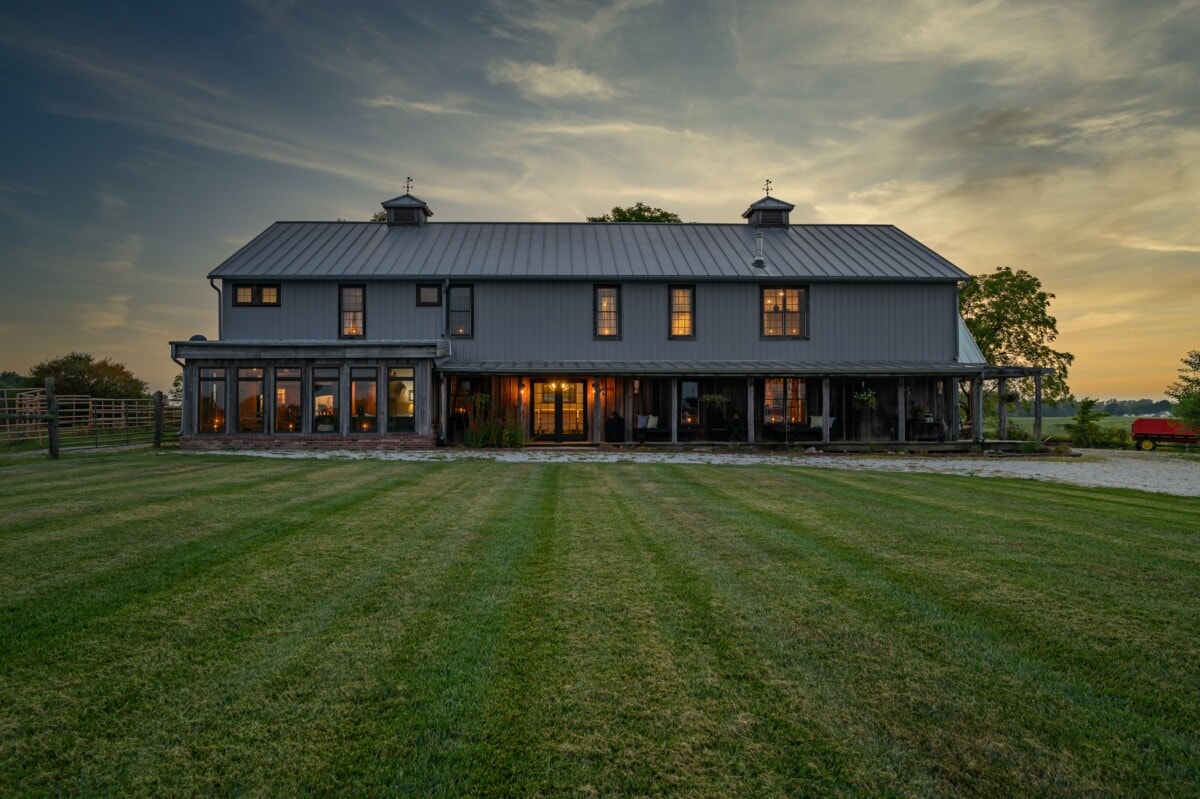In this article, we will explore the fascinating realm of floor plans and prices, providing you with valuable insights into affordable options. Whether you are a prospective homeowner or simply curious about the latest trends in housing, this content will shed light on the possibilities and considerations when it comes to prefab homes. Join us as we unravel the exciting world of modern prefab homes and discover how they can be a stylish and cost-effective housing solution.
1. Introduction
Welcome to the world of modern prefab homes, where style meets affordability. In this article, we will explore the ins and outs of floor plans and prices, providing you with essential insights to make informed decisions.
Modern prefab homes have gained popularity in recent years due to their sleek designs, eco-friendly construction methods, and cost-effective nature. Whether you’re a first-time homebuyer or looking to downsize, prefab homes offer a range of benefits that make them a compelling choice.
Throughout this article, we will delve into various aspects of modern prefab homes, including the significance of floor plans and how they influence the overall functionality and aesthetics of your home. We will also discuss the factors that impact prefab home prices, helping you understand what to expect when budgeting for your dream home.
So, join us as we embark on an exciting journey into the world of modern prefab homes, providing you with the knowledge and insights needed to navigate the process with confidence.
2. Understanding Modern Prefab Homes
Before we dive into floor plans and prices, let’s first understand what exactly modern prefab homes are. These innovative homes are constructed off-site in a controlled factory environment, using advanced manufacturing techniques.
Unlike traditional stick-built homes, prefab homes are built using modules or panels that are then transported to the desired location for assembly. This method offers several advantages, including faster construction times, reduced waste, and improved quality control.
Modern prefab homes are known for their sleek and contemporary designs, with an emphasis on functionality and sustainability. They can range from compact and minimalist dwellings to spacious and luxurious residences, catering to a variety of lifestyles and preferences.
Furthermore, prefab homes can be customized to suit individual needs and preferences. From selecting the exterior finishes to choosing interior fixtures and layouts, homeowners have the flexibility to create a unique living space that reflects their personal style.
With their modern aesthetics, streamlined construction process, and eco-friendly features, modern prefab homes have become an attractive alternative to traditional construction methods. In the next sections, we will explore the world of floor plans and prices, helping you navigate the exciting realm of prefab home ownership.
3. Benefits of Prefab Homes
Prefab homes offer numerous advantages, making them an appealing option for many homeowners. Let’s explore some of the key benefits:
Speedy Construction:
One of the significant advantages of prefab homes is their faster construction time. Since the components are manufactured off-site, the on-site assembly process is streamlined, reducing the overall construction timeline. This means you can move into your new home quicker, saving both time and money.
Affordability
Prefab homes are often more cost-effective compared to traditional stick-built homes. The controlled factory environment allows for efficient use of materials, reducing waste and expenses. Additionally, the ability to customize your home within a predetermined budget ensures that you get the most value for your money.
Design Flexibility
Prefab homes offer a wide range of design options to suit various tastes and preferences. From contemporary and minimalist designs to more traditional styles, you can choose a prefab home that aligns with your desired aesthetic. Additionally, the flexibility to modify floor plans and select finishes allows for personalization, making your home truly unique.
Sustainability
Prefab homes are often built with sustainability in mind. The controlled factory environment enables better energy efficiency, reduced construction waste, and the use of eco-friendly materials. Additionally, many prefab homes come with features like solar panels, rainwater harvesting systems, and energy-efficient appliances, further reducing their environmental impact.
These are just a few of the benefits that prefab homes offer. As we continue exploring floor plans and prices, you’ll discover more reasons why these homes have gained popularity among those seeking a stylish, affordable, and sustainable housing option.
4. Factors Influencing Floor Plans
When it comes to choosing the right floor plan for your modern prefab home, several factors come into play. Understanding these factors will help you make an informed decision that aligns with your lifestyle and needs.
Family Size and Composition
Consider the size and composition of your family when selecting a floor plan. If you have a large family, you may prioritize spacious common areas, multiple bedrooms, and ample storage. Alternatively, if you’re a couple or empty nesters, you might prefer an open-concept layout that maximizes space.
Lifestyle and Activities
Think about how you live and the activities you enjoy. If you love entertaining guests, a floor plan with an open kitchen, dining, and living area might be ideal. On the other hand, if you work from home or require a dedicated office space, consider a floor plan that includes a home office or a flexible space that can be converted into one.
Future Needs
Anticipating your future needs is essential when choosing a floor plan. If you plan to expand your family or require space for aging parents, it’s wise to select a floor plan that allows for future modifications or additions. This could include options for additional bedrooms, a separate living area, or even a separate unit.
Personal Preferences
Consider your personal preferences when it comes to the layout and features of your home. Do you prefer an open concept or more defined spaces? Are outdoor living areas important to you? Evaluate your lifestyle and how you envision yourself living in the home to find a floor plan that suits your preferences.
By taking these factors into account, you can narrow down your options and find a floor plan that meets your unique requirements and enhances your daily life. In the next sections, we will explore popular modern prefab home floor plans to provide you with further inspiration.
5. Popular Modern Prefab Home Floor Plans
When it comes to modern prefab homes, there is a wide range of floor plans available to suit different preferences and lifestyles. Let’s explore some of the most popular ones:
Open-Concept Layout
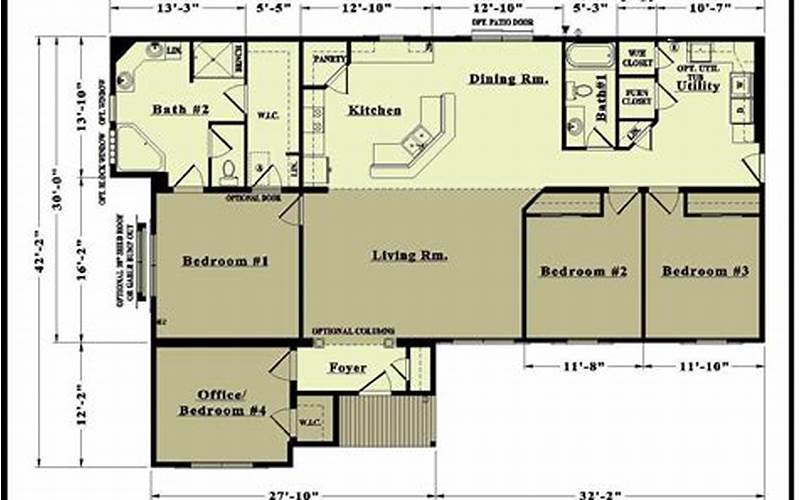
Multi-Level Design
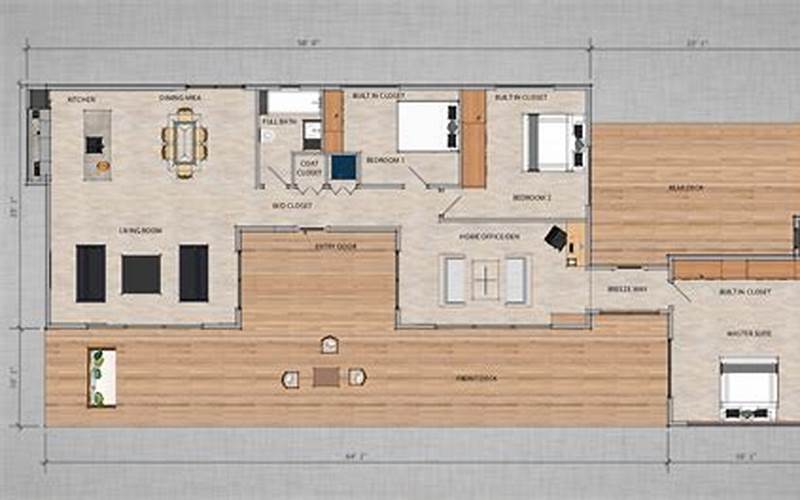
Compact and Minimalist
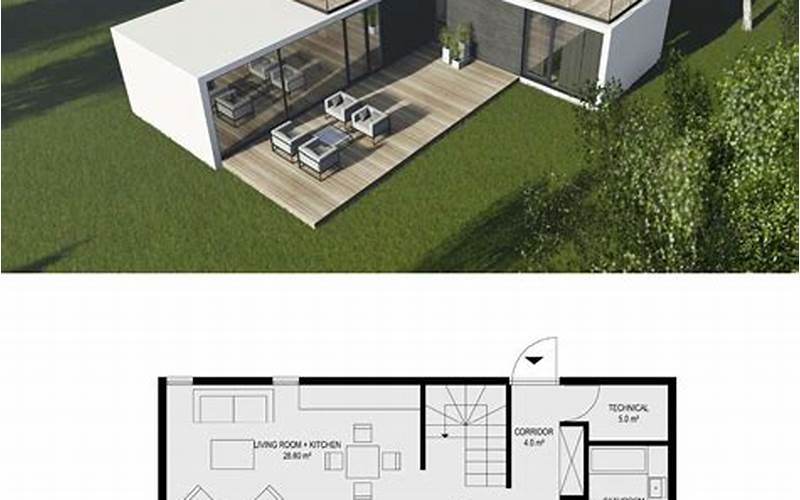
Single-Story Ranch
 The single-story ranch floor plan is a classic and timeless option. It offers a single level of living space, making it accessible and convenient for all ages. This style often includes an open layout, with bedrooms and common areas easily accessible from a central living space.
The single-story ranch floor plan is a classic and timeless option. It offers a single level of living space, making it accessible and convenient for all ages. This style often includes an open layout, with bedrooms and common areas easily accessible from a central living space.Customizable Options
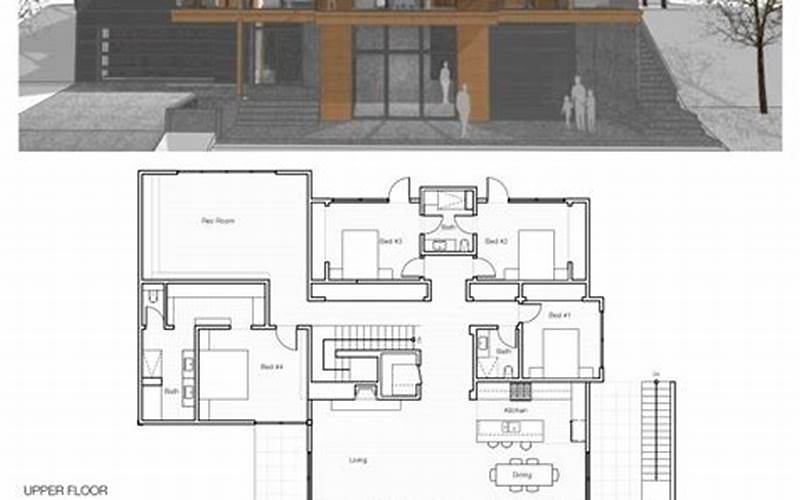 Many modern prefab home manufacturers offer customizable options, allowing you to tailor the floor plan to your specific needs. This level of customization ensures that your home is uniquely suited to your lifestyle, with options to modify room sizes, add or remove rooms, or even incorporate special features like home offices or fitness areas.
Many modern prefab home manufacturers offer customizable options, allowing you to tailor the floor plan to your specific needs. This level of customization ensures that your home is uniquely suited to your lifestyle, with options to modify room sizes, add or remove rooms, or even incorporate special features like home offices or fitness areas.6. Customizing Your Floor Plan
One of the exciting aspects of modern prefab homes is the ability to customize floor plans to fit your specific requirements. Let’s explore how you can bring your vision to life:
Collaborating with Architects and Designers
Working with architects and designers is key to creating a customized floor plan. They have the expertise to understand your needs, translate your ideas into practical solutions, and ensure that the design meets building codes and regulations. Collaborating with professionals will help you navigate the design process smoothly.
Identifying Your Requirements
Start by identifying your specific requirements for your home. Consider factors such as the number of bedrooms and bathrooms needed, the desired size of living spaces, storage requirements, and any special features you would like to incorporate. Creating a comprehensive list will provide a clear direction for the customization process.
Adapting Existing Floor Plans
Prefab home manufacturers often have a range of existing floor plans to choose from. You can adapt these plans to suit your needs by making modifications to room sizes, layout configurations, or adding/removing specific features. This allows for a more streamlined customization process while still achieving a unique and personalized home.
Considering Lifestyle and Functionality
When customizing your floor plan, it’s essential to consider your lifestyle and how you plan to use each space. Think about how you will flow through the home, the functionality of each room, and how it will support your daily activities. This thoughtful approach will result in a floor plan that enhances your lifestyle.
Incorporating Design Elements
Don’t forget to consider design elements when customizing your floor plan. This includes selecting finishes, materials, and architectural details that reflect your personal style. From flooring options to cabinetry styles, these small details can greatly impact the overall aesthetics and ambiance of your home.
By working closely with professionals, identifying your requirements, adapting existing floor plans, considering lifestyle and functionality, and incorporating design elements, you can create a custom floor plan that perfectly suits your needs and preferences. The next section will delve into the important topic of prefab home prices, helping you understand the factors that influence the cost of your dream home.
7. Understanding Prefab Home Prices
While prefab homes are known for their affordability, it’s crucial to have a comprehensive understanding of the pricing factors involved. Let’s break down the costs and explore what influences the prices of modern prefab homes:
Materials and Construction
The quality of materials used and the construction techniques employed greatly impact the cost of a prefab home. Higher-quality materials and advanced construction methods may result in a higher price tag. However, they often offer better durability, energy efficiency, and long-term cost savings.
Size and Complexity
The size and complexity of a prefab home play a significant role in determining its price. Larger homes generally require more materials, labor, and time to construct, leading to higher costs. Similarly, homes with complex designs or unique features may involve additional expenses due to the customization involved.
Location and Site Preparation
The location of your prefab home and the site preparation required can impact the overall cost. Factors such as land acquisition, site leveling, utility connections, and permits vary depending on the location and can add to the total expenses. It’s important to consider these factors when budgeting for your prefab home.
Additional Features and Upgrades
Adding extra features and upgrades to your prefab home will naturally increase the price. This could include premium finishes, high-end appliances, smart home technology, or specialized design elements. It’s essential to carefully consider your priorities and budget when deciding on these additional features.
Transportation and Assembly
Transporting the prefab modules or panels to your desired location and assembling them on-site incur additional costs. The distance between the manufacturing facility and your site, as well as any logistical challenges, can influence transportation expenses. It’s important to factor in these costs when estimating the overall price.
By considering these factors, you can gain a clearer understanding of the pricing structure of modern prefab homes. In the next section, we will delve deeper into determining your budget and exploring cost-saving measures to help you make informed financial decisions.
8. Determining Your Budget
Setting a realistic budget is essential when considering modern prefab homes. Let’s explore some key factors to consider in order to determine your budget:
Financial Assessment
Start by assessing your financial situation. Consider your income, savings, and any existing financial commitments. This will help you determine how much you can comfortably allocate towards your prefab home budget. It’s important to be realistic and ensure that your budget aligns with your financial capabilities.
Researching Prefab Home Prices
Do thorough research on prefab home prices in your desired location and style. Look for reputable prefab home manufacturers and compare their offerings. This will give you a general idea of the price range, allowing you to better estimate the budget needed for your project.
Factoring in Additional Costs
Remember to account for additional costs beyond the base price of the prefab home. This includes site preparation, utility connections, permits, taxes, transportation, and assembly. These expenses can vary depending on your location and specific requirements. Consulting with professionals and obtaining quotes can help you estimate these costs more accurately.
Considering Financing Options
Explore different financing options available for prefab homes, such as mortgages, construction loans, or personal loans. Understanding the terms, interest rates, and repayment options will help you determine the feasibility of financing your prefab home project. Consult with financial institutions or mortgage brokers to explore the best financing solution for your needs.
Flexibility and Contingency
It’s important to build flexibility and contingency into your budget. Unexpected expenses or design changes may arise during the construction process. Allocating a portion of your budget as a contingency fund will help you handle unforeseen circumstances without derailing your project.
By carefully assessing your financial situation, researching prefab home prices, factoring in additional costs, considering financing options, and building flexibility into your budget, you can determine a realistic and comprehensive budget for your modern prefab home. In the next section, we will explore cost-saving measures that can help you achieve your dream of owning a modern prefab home within your budget.
9. Exploring Cost-Saving Measures
Looking for ways to save money without compromising on quality? Let’s explore some cost-saving measures and strategies that can help you achieve your dream of owning a modern prefab home within your budget:
Research and Compare
Take the time to research and compare different prefab home manufacturers. Look for reputable companies that offer quality products at competitive prices. By obtaining multiple quotes and comparing their offerings, you can find the best value for your budget.
Standardized Designs
Consider opting for standardized designs instead of fully customized floor plans. Prefab home manufacturers often offer a range of pre-designed models that have been optimized for efficiency and cost-effectiveness. Choosing a standardized design can save on design and engineering fees.
Optimize Space
Efficient space planning can help you save on construction costs. Optimize the use of available space by avoiding unnecessary hallways, utilizing multi-purpose areas, and focusing on functionality. This approach eliminates wasted square footage and reduces material and construction expenses.
Energy Efficiency
Investing in energy-efficient features can save you money in the long run. Opt for energy-efficient appliances, LED lighting, well-insulated windows and doors, and consider incorporating renewable energy sources such as solar panels. These features may have an upfront cost but can lead to significant savings on utility bills in the future.
DIY or Sweat Equity
If you have the skills and time, consider taking on certain tasks yourself or with the help of friends and family. This can include interior finishes, landscaping, or even assisting with the assembly process. By contributing your own labor, you can save on construction costs and add a personal touch to your prefab home.
By implementing these cost-saving measures, you can make your modern prefab home more affordable without compromising on quality or style. Remember to prioritize your needs and budget throughout the process to ensure a successful and satisfying outcome. In the next section, we will conclude our exploration of modern prefab homes, summarizing the key insights and takeaways.
10. Conclusion
Throughout this article, we have explored the fascinating world of modern prefab homes, focusing on floor plans and prices. We’ve learned that prefab homes offer a range of benefits, including affordability, design flexibility, and sustainability.
When it comes to floor plans, factors such as family size, lifestyle, and future needs play a crucial role in determining the right layout for your home. From open-concept designs to multi-level options, there are floor plans to suit every preference.
Understanding the pricing factors of prefab homes, including materials, size, location, and additional features, is essential for setting a realistic budget. By considering these factors and exploring cost-saving measures, you can make your prefab home more affordable without compromising on quality.
As you embark on your prefab home journey, remember to conduct thorough research, collaborate with professionals, and assess your financial situation. This will help you make informed decisions and create a home that perfectly suits your needs and preferences.
We hope that this article has provided you with valuable insights and inspiration for your modern prefab home project. Whether you’re a first-time homebuyer, downsizing, or looking for an eco-friendly housing option, prefab homes offer a stylish and cost-effective solution.
Thank you for joining us on this exploration of modern prefab homes. Wishing you success in building your dream home!
In conclusion, modern prefab homes offer an affordable and sustainable housing solution with customizable floor plans. By understanding the factors that influence pricing, such as materials, size, and location, you can determine a realistic budget for your project. Additionally, exploring cost-saving measures and considering your financial situation will help you make informed decisions without compromising on quality. Whether you’re a first-time homebuyer or looking to downsize, prefab homes provide a range of benefits, including design flexibility and energy efficiency. So, embark on your prefab home journey with confidence, knowing that you can create a stylish and personalized living space that meets your needs and aligns with your budget.


